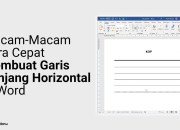
Tentu, mari kita telusuri dunia angka 1 sampai 100 dalam bahasa Inggris, lengkap dengan cara pengucapan dan beberapa nuansa penggunaannya.
Numbers 1-100 in English: Pronunciation and Usage
Understanding numbers is fundamental to language proficiency. This guide offers a detailed exploration of numbers 1 to 100 in English, focusing on pronunciation, spelling, and common usage scenarios.
The Foundation: Numbers 1-10
These are the building blocks of our numerical system. Mastering these is crucial.
- 1 (One): Pronounced /wʌn/. This is a single unit.
- Example: "I have one apple."
- 2 (Two): Pronounced /tuː/. Note the silent ‘w’.
- Example: "There are two birds on the tree."
- 3 (Three): Pronounced /θriː/. The ‘th’ sound is voiceless (like in "thin").
- Example: "She has three children."
- 4 (Four): Pronounced /fɔːr/.
- Example: "We need four chairs."
- 5 (Five): Pronounced /faɪv/.
- Example: "He scored five goals."
- 6 (Six): Pronounced /sɪks/.
- Example: "There are six days in a week."
- 7 (Seven): Pronounced /ˈsɛvən/.
- Example: "She is seven years old."
- 8 (Eight): Pronounced /eɪt/. Be careful not to confuse it with "ate" (the past tense of "eat").
- Example: "We have eight tickets."
- 9 (Nine): Pronounced /naɪn/.
- Example: "He has nine lives (like a cat)."
- 10 (Ten): Pronounced /tɛn/.
- Example: "She has ten fingers."
The Teens: Numbers 11-19
These numbers have unique names and don’t follow a predictable pattern based on the numbers 1-10.
- 11 (Eleven): Pronounced /ɪˈlɛvən/.
- Example: "The game starts at eleven o’clock."
- 12 (Twelve): Pronounced /twɛlv/.
- Example: "There are twelve months in a year."
- 13 (Thirteen): Pronounced /ˌθɜrˈtiːn/. Note the stress is on the second syllable.
- Example: "He is thirteen years old, a teenager."
- 14 (Fourteen): Pronounced /ˌfɔrˈtiːn/.
- Example: "She has fourteen cousins."
- 15 (Fifteen): Pronounced /ˌfɪfˈtiːn/. Note the spelling change from "five."
- Example: "We need fifteen more minutes."
- 16 (Sixteen): Pronounced /ˌsɪkˈstiːn/.
- Example: "The movie is sixteen years rating."
- 17 (Seventeen): Pronounced /ˌsɛvənˈtiːn/.
- Example: "She has seventeen dolls."
- 18 (Eighteen): Pronounced /ˌeɪˈtiːn/.
- Example: "He is eighteen years old and can vote."
- 19 (Nineteen): Pronounced /ˌnaɪnˈtiːn/.
- Example: "We have nineteen students in the class."
The Tens: Numbers 20, 30, 40… 90
These are the multiples of ten. Pay attention to the spelling.
- 20 (Twenty): Pronounced /ˈtwɛnti/.
- Example: "We need twenty dollars."
- 30 (Thirty): Pronounced /ˈθɜrti/.
- Example: "The bus arrives in thirty minutes."
- 40 (Forty): Pronounced /ˈfɔrti/. Note the spelling – it’s not "fourty."
- Example: "The speed limit is forty miles per hour."
- 50 (Fifty): Pronounced /ˈfɪfti/.
- Example: "He has fifty cents."
- 60 (Sixty): Pronounced /ˈsɪksti/.
- Example: "There are sixty seconds in a minute."
- 70 (Seventy): Pronounced /ˈsɛvənti/.
- Example: "She is seventy years old."
- 80 (Eighty): Pronounced /ˈeɪti/.
- Example: "The building has eighty floors."
- 90 (Ninety): Pronounced /ˈnaɪnti/.
- Example: "The discount is ninety percent."
Combining Tens and Units: 21-99
To form numbers between the tens, simply combine the ten with the unit, using a hyphen.
- 21 (Twenty-one): /ˈtwɛnti-wʌn/
- Example: "There are twenty-one questions on the test."
- 22 (Twenty-two): /ˈtwɛnti-tuː/
- Example: "I have twenty-two books."
- 33 (Thirty-three): /ˈθɜrti-θriː/
- Example: "He is thirty-three years old."
- 45 (Forty-five): /ˈfɔrti-faɪv/
- Example: "The meeting starts at forty-five past the hour."
- 58 (Fifty-eight): /ˈfɪfti-eɪt/
- Example: "We have fifty-eight guests."
- 64 (Sixty-four): /ˈsɪksti-fɔːr/
- Example: "The computer is sixty-four bit."
- 77 (Seventy-seven): /ˈsɛvənti-ˈsɛvən/
- Example: "She scored seventy-seven points."
- 89 (Eighty-nine): /ˈeɪti-naɪn/
- Example: "The temperature is eighty-nine degrees."
- 96 (Ninety-six): /ˈnaɪnti-sɪks/
- Example: "There are ninety-six apples in the basket."
The Century Mark: 100
- 100 (One hundred): Pronounced /wʌn ˈhʌndrəd/. You can also say "a hundred".
- Example: "I need one hundred dollars." Or, "I need a hundred dollars."
Common Mistakes and Tips
- "Fourteen" vs. "Forty": Pay attention to the stress. "Fourteen" has stress on the second syllable, while "Forty" has stress on the first syllable.
- Spelling of "Forty": Remember, it’s not "fourty."
- "Thirteen" vs. "Thirty": Similar to the above, listen to the stress.
- Using "and": In American English, it’s less common to use "and" when saying numbers like "one hundred and one." You’d usually say "one hundred one." In British English, "and" is more frequently used.
- Practice: The best way to learn numbers is to practice using them in real-life conversations and exercises.
Beyond the Basics: Nuances and Usage
- Ordinal Numbers: These indicate position (first, second, third, etc.). They are crucial for dates, rankings, and sequences. The ordinal forms for 1-10 are: first, second, third, fourth, fifth, sixth, seventh, eighth, ninth, tenth. After that, they generally follow the pattern of adding "-th" to the cardinal number: eleventh, twelfth, thirteenth, twentieth, thirtieth (note the spelling change), etc.
- Fractions: Numbers are used extensively in fractions (one-half, one-quarter, three-fifths).
- Percentages: Numbers are essential for expressing percentages (25%, 50%, 100%).
- Money: Numbers are obviously critical for dealing with money (dollars, cents, pounds, euros, etc.).
- Time: Numbers are used to tell time (hours, minutes, seconds).
- Measurements: Numbers are used in all types of measurements (length, weight, volume, temperature).
- Age: "How old are you?" is a common question, and the answer always involves a number.
- Addresses and Phone Numbers: Numbers are used in addresses and phone numbers, often recited digit by digit.
- Statistics and Data: Numbers are fundamental to statistics and data analysis.
- Mathematical Operations: Numbers are the foundation of addition, subtraction, multiplication, and division.
Conclusion
Mastering numbers 1 to 100 in English is a fundamental step towards fluency. By understanding the pronunciation, spelling, and common usage scenarios, you can significantly improve your communication skills and confidently navigate everyday situations that involve numerical information. Remember to practice regularly and pay attention to the nuances of how numbers are used in different contexts. Good luck!













